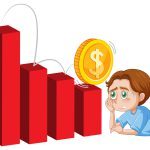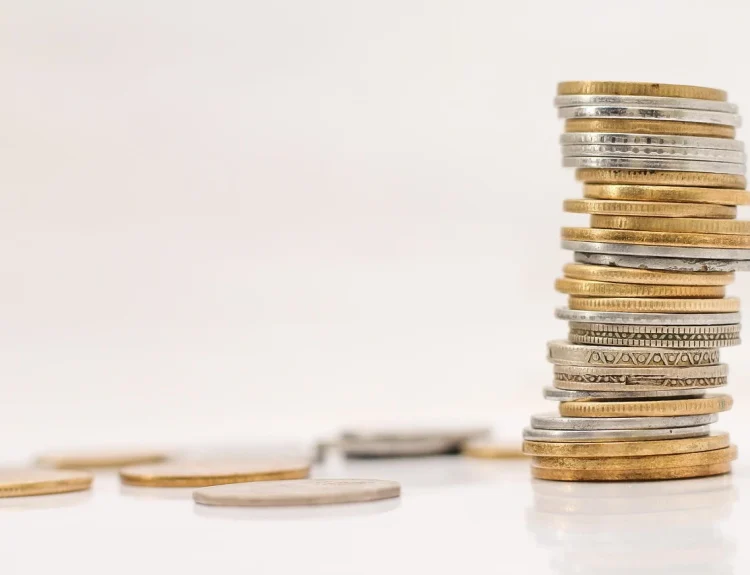We all have some form of debt these days. It will be hard to find a person who does not have the burden of debt. People are in debt, whether because credit is readily available, they have not planned their finances, or because of unforeseen costs. Strategies to eliminate debt help people achieve financial freedom, but they can also be a source of stress.
It is overwhelming to want to be debt-free and consider financial freedom whilst having a large sum of debt. But you can use easy and effective tips to eliminate debt and slowly take charge of your finances. With some regular actions and determination, anyone will be one step closer to becoming a debt-free person.
What Are the Common Types of Debt?
Not all debts are the same, and understanding the type of debt you’re dealing with is the first step toward managing it effectively. Each kind of debt has its own challenges and repayment strategies to eliminate debt. Let’s look at the most common ones people face today.
Credit Card Debt
A credit card debt is usually one of the most difficult forms of debt to take care of due to the high interest rates charged on them. In contrast to the comparatively lower and fixed rates of loans, credit cards may have interest rates exceeding 20%. By paying that bare minimum required every month, the majority of the payment is spent on servicing interest and not decreasing the actual balance. Debt is therefore something that takes years to clear, and you might actually pay even more than the debt itself. This loop causes one to be behind schedule and puts a strain on the finances.
In order to get out of this debt, you want to pay more than the minimum as often as possible. Small additional payments may cause a considerable decrease in the balance and the amount of the interest paid over an extended period. There are also other clever strategies, like the debt avalanche method or the snowball method, which can accelerate repayment.
Personal Loans
Personal loans are a typical installment type of debt, in which you borrow a lump amount and repay it in fixed monthly installments over a specific time, typically one to seven years. Personal loan interest rates are usually lower than those issued on credit cards; however, it also depends on the credit history, income, and loan conditions. Personal loans are potentially an effective way of dealing with debts due to their organized repayment system. Another common solution is debt consolidation, in which you borrow a personal loan and use it to settle several of your outstanding debts with interest, including credit cards. This puts you in a single payment at a relatively lower interest rate, making repayment easier and usually cheaper.
Student Loans
Student loans can have long-term effects, because they can take decades to pay off and postpone big financial milestones such as owning a home or saving enough to retire. In the absence of a clear repayment plan, they would prove to be a constant load. In order to alleviate this burden, there are various repayment options available to the borrowers. IBR plans are also among the most useful, and they will automatically modify payments monthly according to income and family size. This simplifies payments, particularly in the years of low earnings. Also, any balance left after a stipulated repayment period can be written off. IBR plans are flexible, financially relieving, and help one become financially stable in the long term.
How to Assess Your Current Debt Situation?
Before you can pay off debt, you need to understand exactly where you stand financially. This step is about clarity—knowing the full picture of your debts, what they cost you, and how much of your income they consume. With this information, you can create a repayment plan that works and walking in the strategies to eliminate debt.
List All Your Debts
The initial action towards realizing your debt situation is the clear listing of all that you owe. List all your kinds of debts, including credit cards, personal loans, or student loans. Besides them, add the balance to be paid, the rate of interest, and the minimum amount to be paid monthly. With all this information at your fingertips, you will have a complete picture of your financial obligations. This can help you realize what debts are costing you the most and make sure that you do not overlook such small balances, which might accumulate over time. Your repayment plan is based on a complete list.
Calculate Your Total Debt-to-Income Ratio
After calculating your debts, the second thing to do is to determine what your debt-to-income (DTI) ratio is. This involves summing up all payments on debt that you are making every month and dividing them by the amount of money you are earning monthly. The DTI is, say, 25%, assuming that you pay off debts at a rate of $800 a month and earn $3,200 a month. This is a very important ratio as it indicates the proportion of your earnings spent on debt. It is a commonly used method by lenders to determine your creditworthiness and credit capacity. The lower ratio indicates that you have more breathing room, and the higher ratio indicates financial stress.
Identify High-Interest Debts First
Not every debt has the same impact on you. Debts charged with a high interest rate, such as credit card balances, increase at a more rapid rate due to the high interest charged. This is the reason why they should be identified first. By paying them off sooner, you save in the long run, and you lessen your total financial load. This is known as strategic repayment. Two widely used approaches are the so-called debt avalanche, which pays off the most-interest debt first, and the so-called debt snowball, where one uses the smallest balance to make quick wins. Wise prioritization of debts helps you clear the debts more effectively.
Simple Strategies to Eliminate Debt
Once you know your debt situation, it’s time to take action. There’s no single method that works for everyone, but there are several proven strategies you can use to speed up repayment and reduce stress. Below are some of the most effective approaches to becoming debt-free.
The Snowball Method
The Snowball Method concentrates on paying off the smallest of all your debts, regardless of the interest rates. You achieve this by settling smaller balances early on, and this gives you the psychological impetus that encourages you to go out to bigger debts. Every debt that was repaid becomes a mini-victory that helps you become debt-free. This technique is especially useful when one cannot stay motivated, and is available to obtain visible progress in the beginning. It might not give the best results in terms of saving the most interest as compared to other rates, but the feeling of achievement and the tendency to pay those debts off continuously can become an effective long-term financial discipline tool.
The Avalanche Method
The Avalanche Method emphasizes the need to settle debts with the highest interest rates first, which is the best way to save all the money in the long term. High-interest debt is paid off in the shortest time possible, reducing the overall interest paid, and it is the most cost-effective option. You still pay minimum payments on all the other debts and channel additional money to the interest-highest balance. This technique takes time, because at first a large debt, with a high interest rate, will seem to make no progress. Nevertheless, it suits disciplined people who are concerned with financial efficiency because it cuts down debts faster and minimizes long-term financial expenditures even better than the Snowball Method.
Debt Consolidation
Debt consolidation is a type of debt that entails the combination of two or more debts into one loan or payment plan, and this may make things a lot easier to manage financially and may also lead to a reduction in interest rates. Credit cards may be used where balance transfer is available, or personal loans, or even to refinance current debt. Consolidation leads to fewer monthly payments, making it easier to keep track of and prevent missed payments. It may also reduce the overall interest, provided that you take a loan on better terms. Nevertheless, it must be controlled in order to avoid adding a new debt to old accounts. Debt consolidation can be a good tool to make payments simpler, less stressful, and help you move faster on the path to financial freedom when carefully handled.
Automate Your Payments
Automating payments ensures you never miss a due date. This avoids late fees, protects your credit score, and keeps your repayment plan consistent.
Cut Unnecessary Expenses
Review your budget and trim spending where possible. Cook at home instead of dining out, cancel unused subscriptions, or look for cheaper alternatives. Every saved dollar can go toward debt repayment.
Increase Your Income
Boost your repayment power by earning more. Take on freelance work, start a side hustle, or sell unused items at home. Even small extra earnings can speed up your debt-free journey.
Common Debt Management Mistakes to Avoid
As you work on eliminating debt, it’s just as important to avoid the pitfalls that keep people stuck. Many borrowers make small but costly mistakes that slow down their progress. Recognizing these common errors will help you stay on track.
Only Paying Minimum Amounts
It only covers the minimum payment on debt, hence resulting in long-term repayment since a majority of the money that is paid out is used in high-interest loans instead of trying to clear off the debt. This implies that the debt will reduce at a very slow pace by attracting more interest. As a result, you pay a lot more in aggregate interest, even over decades, as a result, with your balance hardly reduces. This cycle locks the borrowers into long-term debts and makes them experience more financial stress, which postpones their financial liberation.
Ignoring Interest Rates
Managing debt does not consider the interest rates, and as such, it ends up paying out a lot of money, which is not necessary. Debts with high interest rates, e.g., credit card or payday, compound fast and double the debt. Any debt with a high-interest rate should be paid off first as it is less expensive to clear off, and the total debt is cleared earlier, and one will save some money. Neglect of such a strategy may result in sluggish and costly repayment that can extend the period of financial disbursement.
Taking on New Debt While Paying Old Debt
New debt when you are still paying old debt will slow financial freedom, as your payments will be stretched over many obligations, raising your monthly spending and interest payments. Such disjointed attention will make it difficult to settle any debt, fully forcing you to continue borrowing and repaying without improvements. New debt through repayment should be avoided to speed up the process of being debt-free and take control of money.
How to Stay Motivated During Debt Repayment?
Paying off debt is a long process, and it can feel discouraging at times. Staying motivated is the key to crossing the finish line. By tracking progress, celebrating small wins, and seeking support, you can keep your energy and focus strong throughout the journey.
Track Your Progress Regularly
Monitoring the process of your debt repayment will remind you of the need to be motivated and keep on track. Budgeting apps, spreadsheets, or physical journals can be used to record the payments, balances, and milestones. This is because progress can be visualized to make you stay motivated, see how much you have achieved, and change strategies where necessary. Constant monitoring also creates a proactive attitude, which keeps you occupied with the goal of getting out of debt.
Celebrate Small Wins
Congratulating yourself on small achievements like paying off a credit card or saving a monthly target will help to instill a good habit into your debt repayment process. The awareness of such milestones helps to lift morale, work harder, and make the process seem less overwhelming. Basic rewards or recognition will keep the momentum and mood alive even during economic crises.
Seek Support
Family support, friends, or even financial advisors are a source of support and professional advice. Share your financial ambitions with people you trust to help eliminate isolation, find some form of accountability, and introduce new options. Consultations of the professional assist in the creation of individualized repayment strategies, negotiation with creditors, and increase the likelihood of success. Both emotional and practical support are important in getting over debt.
When to Seek Professional Help?
If your debt feels unmanageable despite your efforts, professional help may be the next step. Options include:
- Debt counseling services: For budgeting and repayment strategies.
- Credit repair and negotiation assistance: To deal with creditors directly.
- Clear warning signs: Struggling to pay even minimums, relying on new debt for daily needs, or feeling overwhelmed financially.
Conclusion
Debt may feel like a heavy burden, but it doesn’t have to last forever. By listing your debts, focusing on high-interest ones, and using smart strategies like the snowball or avalanche method, you can take back control of your finances.
Stay consistent, celebrate small wins, and don’t hesitate to seek support when needed. The road may be long, but every step brings you closer to freedom. Becoming debt-free means less stress, more choices, and a stronger financial future.
Ready to Take Control of Your Money?
At The Finance Gig, we believe financial freedom is possible for everyone. Don’t just read about it—start your journey today.






